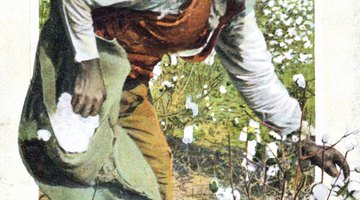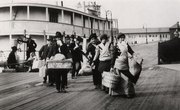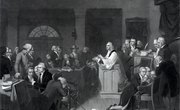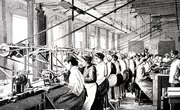"A house divided against itself cannot stand. I believe this government cannot endure permanently half-slave and half-free." - Abraham Lincoln, 1858
The Union Army's victory in the Civil War meant the end of slavery in the South. However, the government had not adequately planned for the economic future of former slaves. Most had few skills beyond farming and yet were without land to farm. The Southern economy was dependent on the labor-intensive production of cotton. Southern planters were financially devastated by the war and without a workforce. These issues and the North's eventual apathy toward the plight of freed slaves resulted in African Americans and other landless Southerners entering the sharecropping cycle of poverty induced by tenant farming.
All About the Land
The Freedmen's Bureau was created just prior to the Civil War's end to help freed slaves make the transition from slavery to a free-labor workforce. The Bureau provided assistance to African Americans in negotiating labor contracts. It also provided food and medical services and built schools for African-American children. The Bureau's most ambitious goal, however, was to settle former slaves on confiscated Confederate land. In the agricultural economy of the South, ownership of land was seen as the only route to economic independence.
Labor Contract or Leave
In late 1864, thousands of former slaves followed Union General William T. Sherman's army across the Southeast. Sherman later granted these former slaves and their families 40 acres each of abandoned plantation land along the Georgia and South Carolina coasts. Sherman's troops also donated some of their mules. Soon a rumor spread throughout the South that on Christmas day of 1865 every former slave family would receive "40 acres and a mule" from the federal government. In reality, President Andrew Johnson ordered confiscated Confederate land returned to its owners. The Freedman's Bureau informed former slaves occupying these lands that they had to sign labor contracts with the landowners or leave.
Preference to Rent Sharecropper Houses
Many former slaves chose tenant farming or sharecropping over contract labor, which seemed to them too similar to plantation "gang-labor." Under the tenancy system, a farmer rented a sharecropper house from the plantation owner and decided which crops to grow. A "cash" tenant was responsible for providing everything else including farm equipment, draft animals and seed. However, cash tenants kept all the crop they produced. More common were "share" tenants who rented property, equipment and animals. They typically kept two-thirds or three-quarters of the crop.
End Result for Most Sharecroppers
The sharecropper was at the bottom of the tenant farming system. Sharecroppers rarely owned anything and instead borrowed property and farming supplies from the landowner. They purchased food and clothing on credit from local merchants or the landowner's store usually at high interest rates. The sharecropper and his family worked the land by raising crops chosen by the landowner. After the landowner sold the crop, he used the proceeds to settle the sharecropper's account. Sharecroppers hoped the sale of the crop would settle their debt and leave them with a small profit. However, more the end result for most sharecroppers was barely breaking even after selling their crops to the landowner.
A Sinister Cycle
Sharecropping and tenant farming proved to be risky ventures. Prices for cotton and tobacco fell in the years following the Civil War and large areas of cropland were simply worn out. While some sharecroppers advanced tenancy to leave their sharecropper house and even achieve land ownership, most found themselves in debt to landowners at the end of the season. Sharecroppers who lost their tenancies were forced into exploitative, low-paying contract labor that kept them indebted to landowners for years and in a cycle closely resembling slavery.
Related Articles
References
- University of Houston: Digital History: The Aftermath of Slavery
- University of Illinois, Urbana-Champaign: Department of English: Modern American Poetry: About the American Civil War
- History.com: Freedmen's Bureau
- History.com: Sharecropping and "40 Acres and a Mule"
- Constitutional Rights Foundation: Southern Black Codes:
Resources
Writer Bio
Laura Leddy Turner began her writing career in 1976. She has worked in the newspaper industry as an illustrator, columnist, staff writer and copy editor, including with Gannett and the Asbury Park Press. Turner holds a B.A. in literature and English from Ramapo College of New Jersey, with postgraduate coursework in business law.











